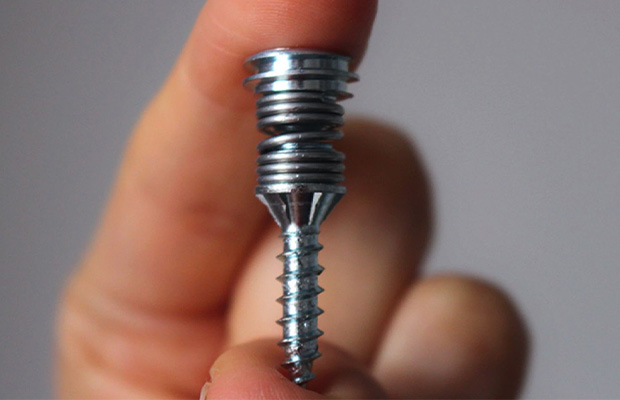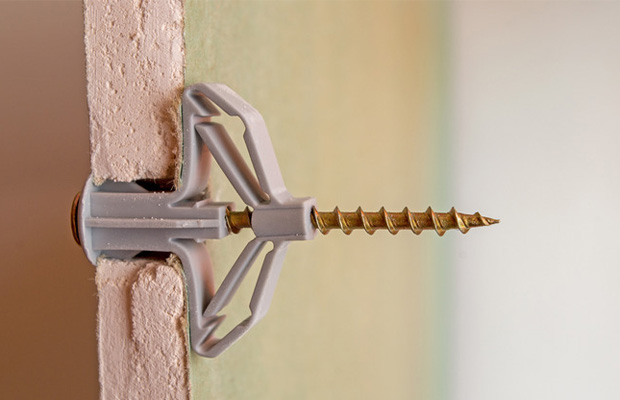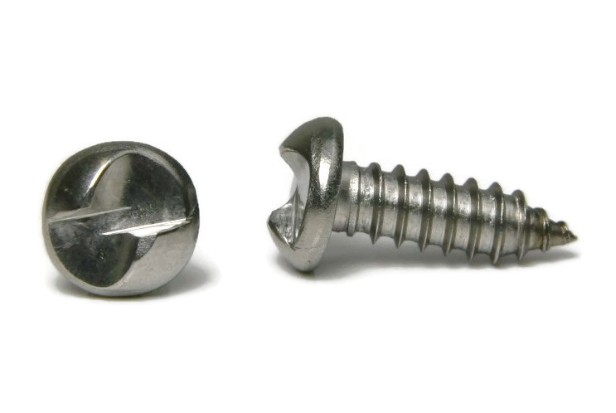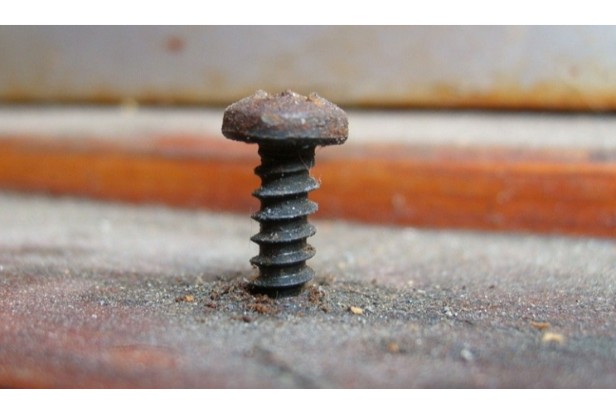
Read this post before making a purchase to learn about the sizes and gauges of drywall screws as well as their uses and thread types.
As the name suggests, drywall screws are specifically designed for fastening plasterboard to either metal or timber. In order to help them stay in place against the drywall, drywall screws are frequently light and have deeper threads.
Table of Contents
Drywall Screw Lengths
- 1/4-inch drywall: Use 1- to 1 1/4-inch drywall screws
- 1/2-inch drywall: Use 1 1/4-inch or 1 5/8-inch drywall screws
- 5/8-inch drywall: Use 1 5/8-inch or 2-inch drywall screws
Comparatively, a wide range of sizes are available for screws intended for construction. The reason is that building materials come in a variety of thicknesses, from sheet metal to four-by-four posts and even thicker. Not so with drywall.
Homes typically have drywall that is 1/2 inch thick. Although it happens infrequently and only slightly, thickness can occasionally increase or decrease. Generally speaking, type-x or fire code drywall is the only type of drywall that do-it-yourselfers will need to install with thicker sheetrock. Type-x drywall, which is used in garages and on walls next to furnace rooms, is slightly thicker (5/8-inch) to help contain the spread of fire.
The facing for walls and ceilings is occasionally made of 1/4-inch thick dry wall. It can be used to create curves due to its flexibility. Nevertheless, the majority of the drywall that is put up by do-it-yourselfers in bathrooms, kitchens, and other general areas will be 1/2-inch thick.
Drywall Screw Threads
Drywall screws come in two different thread sizes: coarse and fine.
Coarse Thread Drywall Screws
For most wood studs, use coarse-thread drywall screws.
The majority of drywall and wood stud applications are best served by coarse-thread drywall screws, also referred to as W-type screws. The broad threads do a good job of gripping into the wood and pulling the drywall up against the studs.
The metal burrs that can ensnare in your fingers are a drawback of coarse-thread screws. When working with coarse-thread drywall screws, be sure to wear gloves.
Fine Thread Drywall Screws
Fine-thread drywall screws, also referred to as S-type screws, are self-threading, making them ideal for use with metal studs.
Fine-thread drywall screws work best for attaching drywall to metal studs because they have sharp points. Coarse threads frequently chew through the metal and never find the right traction. Metal responds well to fine threads because they are self-threading.
Drywall Screw Gauges
The gauge of a drywall screw is its diameter. You will typically use drywall screws in sizes #6 or #8.
You should be aware that the screw’s diameter grows as the gauge number rises. A #6 drywall screw would therefore be thinner than a #8 drywall screw. Although it might seem obvious, many building materials used in homes move in the opposite direction. For instance, sandpaper grits with lower numbers are actually coarser than grits with higher numbers.
Actual sizes of drywall screw gauges:
- #6 (0.1380-inch)
- #8 (0.1640-inch)
The second number after the length is frequently used to represent gauge. For example, a 1 5/8-inch long screw with a #6 gauge would be shown as: “1 5/8 inch x 6.”

Uses For Drywall Screws
Put Up A Paint Station
This Old House master carpenter To create an improvised drying rack, Norm Abram fastens a scrap piece of wood with a drywall screw through each corner before resting freshly painted cabinet doors on the four points.
Replace A Punch
If you’re trying to drill a hole in a tile, but the drill bit keeps “walking”,This Old House general contractor Tom Silva lightly taps a 2-inch drywall screw with a hammer to make a chip. This facilitates the initiation of masonry bits and maintains the drill bit in place.
Snake A Sink
A drywall screw can unclog a small hair clog because its threads are toothy enough to catch fibers.
Craft A Trammel
Tom Silva makes his out of two screw heads that have been driven through a piece of wood. He can scratch a perfect arc or circle by placing them apart by the same amount as his suggested radius.
Pilot A Hole
In a pinch, a drywall screw will pre-drill an accessible path for larger hand-turned hooks, eye screws, and lag bolts in place of a 1⁄8-inch starter bit.
Silence A Squeak
Find where the floor meets a joist beneath the carpet to fix creaky floors by inserting a 2-inch drywall screw an inch and a half through the carpet. The head can be safely snapped off with a quick, glancing blow from a hammer below the pile of the carpet.
Substitute For A Stopper
To clear and seal the nozzle of a glue or caulk tube, twist a drywall screw into it. Leave the screw in place for a screw-off top.
Can You Use Drywall Screws For Building?
Some DIYers unintentionally use drywall screws for building projects. That’s because drywall screws are much less expensive than wood screws, drive and bite into wood incredibly well, and are widely available.
There aren’t many woodworkers who would ever use drywall screws for fine construction. Avoiding drywall screws is crucial when working on heavy or even moderate building projects, especially when working on outdoor projects like fences and decks.
It is generally accepted that drywall screws have a tendency to be brittle. They may snap as opposed to bending. Particularly prone to cleanly breaking off are drywall screw heads, leaving the shaft section embedded in your wood. A headless screw cannot be removed with a screw extractor.
However, some do-it-yourselfers have discovered through informal testing that drywall screws have strength levels that are comparable to those of standard wood screws1. When working with softwoods, drywall screws even outperform wood screws. But drywall screws will break before wood screws when it comes to hardwoods.
Its bugle head is one of the features that makes drywall screws ideal for drywall. The drywall screw’s curved head is intended to crease the drywall’s top paper layer, not to penetrate wood. It takes a lot of force from the drill to overcome the force that a drywall screw exerts as it is driven into wood and reaches the head. This explains why drywall heads are breaking off so frequently when being driven into wood.
The best applications for drywall screws, when safety is not a concern, are for drywall, small-scale construction projects, or temporary building.
How Many Drywall Screws Per Pound?
You’ll need to drive a specific number of drywall screws for the project, but they are frequently sold by weight, making it difficult to estimate how many to purchase. Quantity is never guaranteed when screws are sold per pound, but there are estimates:
- 1-5/8-inch coarse thread #6 screws: about 200 screws
- 1-1/4-inch coarse thread #6 screws: about 238 screws
- 2-1/2-inch coarse thread #8 screws: about 92 screws
Which Type of Drywall Screw Should I Use?
The phosphate coated, coarse thread 1 1/4-inch or 1 5/8-inch drywall screw performs admirably for the majority of projects involving 1/2-inch drywall installed on wood studs.
Due to the large number of fasteners needed for drywall work, this screw is affordable and available in large tubs. Due to how much shaft is left after the first 1/2 inch of drywall thickness is covered, the 1 5/8-inch drywall screw can be challenging to sink. While stepping back on length makes driving easier, it also reduces holding strength.
This shorter screw makes it simpler to calibrate that final 1/8-inch of drive, which is crucial because it is where the bugle head of the screw needs to crease but not tear the outer paper layer.
You might want to use the longer drywall screw to hang drywall on ceilings. Either the long or short drywall screw can be used to hang drywall on walls.
How To Drive Drywall Screws?
You won’t need a special drywall screwgun if you’re a do-it-yourselfer or a casual drywall installer of any kind.
A drywall screwgun is a specialized tool for hanging drywall. In comparison to most cordless drills, it is a smaller, lighter, and lower torque tool. Although screwguns are very good at driving drywall screws, homeowners shouldn’t buy them because of their limited functionality.
- Adjust Drill Torque: You will need to buy a cordless drill with these features if your current one lacks a clutch and an adjustable speed for varying torque. You can avoid stripping the screwhead, also referred to as camming out, by using the clutch to reduce torque.
- Pierce the Paper: The screw’s pointed end can be used to pierce the drywall paper. Turn on the drill, then place the drill-driver bit on the screw.
- Draw in the Screw: Let the screw naturally penetrate the drywall and stud. You will need to exert more pressure around the halfway point. Otherwise, the head will emerge. In other words, the drill driver will strip the screw’s head.
- Stop When Flush: A stop should be made when the head and paper are level.
- Sink: After that, turn the screw another quarter or half a turn so that it rests just below the paper without tearing it.
Drywall Screw Terminology And Features
- Bugle head: The screw head’s conical shape is referred to as a “bugle head.” Without completely tearing through the top layer of paper, this shape helps the screw stay in place.
- Sharp point: A sharp point is specified for some drywall screws. It is simpler to start the screw and stab it into the drywall paper thanks to the point.
- Drill-driver: A #2 Phillips head drill-driver bit is typically used for the majority of drywall screws. Although many construction screws are starting to use Torx, square, or other screwheads besides Phillips, most drywall screws still have Phillips heads.
- Coatings: To prevent corrosion, black drywall screws have a phosphate coating. A different kind of drywall screw has a thin layer of vinyl coating that increases its corrosion resistance. They are additionally simpler to capture due to the shanks’ slickness.
Coarse Vs. Fine Drywall Screws
The screw’s thread should be one of your primary considerations. In contrast to a fine thread, which is tighter, a coarse thread is wider and has less thread.
Whether you need a coarse or fine thread drywall screw largely depends on the material you’re screwing plasterboard into:
- Coarse thread screw – The best choice for wood screwing.
- Fine thread screw – ideal for screwing drywall into metal.
Collated Vs. Uncollated Drywall Screws
The arrangement of the screws, as opposed to the screws themselves, is what makes collated screws different from uncollated screws.
The term “collated screws” refers to screws that are sold in a row joined by plastic and are intended to be fed into an auto-feed screwdriver. Collated literally translates to “to collect and combine.” Contractors favor these the most because they can be fixed quickly and easily.
On the other hand, uncollated screws are delivered loose and can be used with any auto-feed screwdriver. If only a small section of plasterboard needs to be fixed, these individual screws can be helpful.
Which Drywall Screws Are The Best?
The demands of your project will ultimately determine which drywall screw you need.
What matters most is whether you’re screwing the drywall into metal or wood. The thickness of the drywall and whether you have an auto-feed screwdriver should also be taken into account.
There are numerous choices for drywall screws that can be used for a variety of purposes. Why not check out our offers right away? At Fastbuild, we offer a huge selection of trade products at fantastic trade prices.
You May Also Like: Self-tapping Screws Vs. Self-drilling Screws


